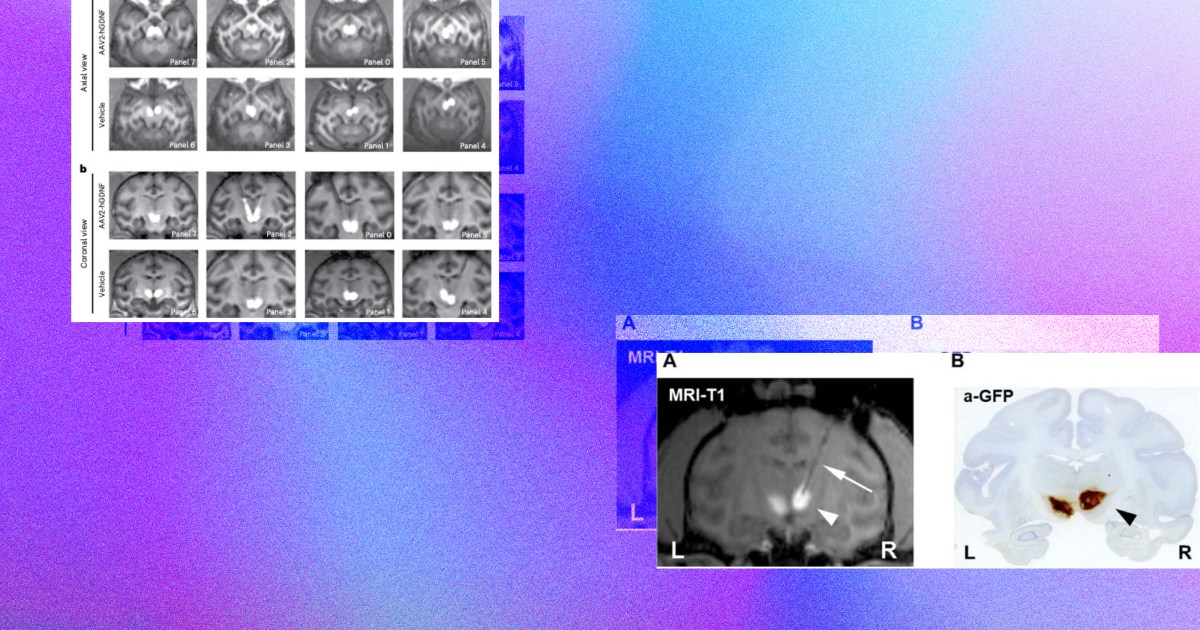Extreme treatment for alcoholism slashes drinking by 90% in monkeys
Extreme treatment for alcoholism slashes drinking by 90% in monkeys Freethink


A Single Shot Gene Therapy Shows Promise as a Treatment for Alcoholism

The Challenge: Alcohol Use Disorder (AUD)
A person with Alcohol Use Disorder (AUD) has difficulty controlling their alcohol consumption, even when it negatively impacts their life, job, or health.
Chronic alcohol use causes the brain to produce, and process, less dopamine.
In the United States, it is estimated that over 10% of people over the age of 12 have AUD. While medications, counseling, and willpower can help some individuals stop drinking, staying sober can be a significant challenge. Approximately 40-60% of people with AUD experience relapses at least once.
According to the CDC, alcohol-related causes contribute to more than 140,000 deaths in America each year. The rate of alcohol-related deaths has been increasing for years, especially during the pandemic.
The Idea: Dopamine Deficit and Alcohol Relapse
Occasional drinking causes the brain to release more dopamine, a chemical that produces feelings of pleasure. However, chronic alcohol use leads to a decrease in dopamine production and processing. This persistent dopamine deficit has been linked to alcohol relapse.
Currently, there is no known way to reverse the brain changes caused by AUD. However, a team of US researchers hypothesized that a gene therapy being developed for Parkinson’s disease could also serve as a dopamine-replenishing treatment for alcoholism.
The Study: Gene Therapy for Alcoholism
The researchers tested the gene therapy on heavy-drinking monkeys. The monkeys’ alcohol consumption decreased by 90% over the course of a year.
“We targeted the cell bodies that produce dopamine with this gene to increase dopamine synthesis, thereby replenishing or restoring what chronic drinking has taken away.”
Kathleen Grant
The treatment focuses on the protein GDNF (glial cell line-derived neurotrophic factor), which supports the survival of specific neurons linked to dopamine. A harmless virus was used to deliver the gene that codes for GDNF into the brains of four heavy-drinking monkeys. These monkeys consumed an amount of ethanol-infused water equivalent to a person having nine drinks per day.
Another four heavy-drinking monkeys underwent the same procedure but received a saline solution instead of the gene therapy as controls.
The Results: Significant Reduction in Alcohol Consumption
All monkeys had their access to alcohol removed for two months after the surgery. When alcohol was reintroduced for four weeks, the treated monkeys consumed 50% less compared to the control group.
“They decreased their drinking to the point that it was so low we didn’t record a blood-alcohol level.”
Kathleen Grant
The researchers repeated the cycle of removing and reintroducing alcohol for a year. By the end of the study, the treated monkeys’ alcohol consumption had decreased by over 90% compared to the control group.
When the researchers examined the monkeys’ brains, they confirmed that dopamine levels had been replenished in the treated animals but remained low in the control group.
Looking Ahead: Potential Implications and Considerations
Dopamine is involved in various functions beyond addiction, so further research is necessary to determine if these results can be replicated in humans. Additionally, it is crucial to investigate whether the gene therapy has any unintended effects on mood or behavior.
Due to the invasive nature of the brain surgery required for this therapy and its likely irreversibility, it is unlikely to become a common treatment for alcoholism. However, it could potentially be a life-saving option for individuals with severe AUD who have not responded to other therapies.
If you have any comments or tips for future stories, please email us at [email protected].
SDGs, Targets, and Indicators
| SDGs | Targets | Indicators |
|---|---|---|
| SDG 3: Good Health and Well-being | 3.5: Strengthen the prevention and treatment of substance abuse, including narcotic drug abuse and harmful use of alcohol | – Alcohol consumption reduction – Alcohol-related deaths reduction |
| SDG 16: Peace, Justice, and Strong Institutions | 16.1: Significantly reduce all forms of violence and related death rates everywhere | – Reduction in alcohol-related violence and deaths |
1. Which SDGs are addressed or connected to the issues highlighted in the article?
SDG 3: Good Health and Well-being
The article addresses the issue of alcohol use disorder (AUD), which is a health concern related to substance abuse. SDG 3 aims to ensure good health and well-being for all, including the prevention and treatment of substance abuse.
SDG 16: Peace, Justice, and Strong Institutions
The article mentions the rising rate of alcohol-related deaths, which can contribute to violence and harm in society. SDG 16 aims to promote peaceful and inclusive societies, which includes reducing violence and related death rates.
2. What specific targets under those SDGs can be identified based on the article’s content?
Target 3.5: Strengthen the prevention and treatment of substance abuse, including narcotic drug abuse and harmful use of alcohol
The article highlights the potential of gene therapy as a treatment for alcoholism, addressing the target of strengthening the treatment of substance abuse, specifically harmful use of alcohol.
Target 16.1: Significantly reduce all forms of violence and related death rates everywhere
The article mentions the high number of alcohol-related deaths in the US, indicating the need to reduce violence and death rates associated with alcohol consumption.
3. Are there any indicators mentioned or implied in the article that can be used to measure progress towards the identified targets?
The following indicators can be used to measure progress towards the identified targets:
– Alcohol consumption reduction: The article mentions that the heavy-drinking monkeys in the study showed a significant decrease in alcohol consumption, indicating progress towards reducing harmful alcohol use.
– Alcohol-related deaths reduction: The article highlights the high number of alcohol-related deaths in the US, suggesting that reducing these deaths would be an indicator of progress towards the target.
By monitoring these indicators, progress can be measured in achieving the targets of reducing harmful alcohol use and related deaths.
4. SDGs, Targets, and Indicators
| SDGs | Targets | Indicators |
|---|---|---|
| SDG 3: Good Health and Well-being | 3.5: Strengthen the prevention and treatment of substance abuse, including narcotic drug abuse and harmful use of alcohol | – Alcohol consumption reduction – Alcohol-related deaths reduction |
| SDG 16: Peace, Justice, and Strong Institutions | 16.1: Significantly reduce all forms of violence and related death rates everywhere | – Reduction in alcohol-related violence and deaths |
Behold! This splendid article springs forth from the wellspring of knowledge, shaped by a wondrous proprietary AI technology that delved into a vast ocean of data, illuminating the path towards the Sustainable Development Goals. Remember that all rights are reserved by SDG Investors LLC, empowering us to champion progress together.
Source: freethink.com

Join us, as fellow seekers of change, on a transformative journey at https://sdgtalks.ai/welcome, where you can become a member and actively contribute to shaping a brighter future.







